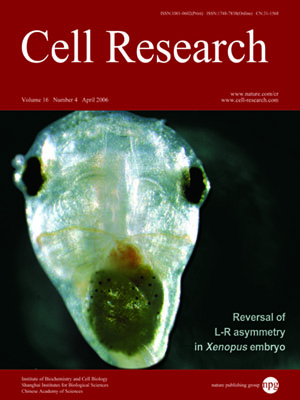
Volume 16, No 4, Apr 2006
ISSN: 1001-0602
EISSN: 1748-7838 2018
impact factor 17.848*
(Clarivate Analytics, 2019)
Volume 16 Issue 4, April 2006: 394-400
LETTERS TO THE EDITOR
Primary evidence for involvement of IP3 in heat-shock signal transduction in Arabidopsis
Hong Tao Liu, Fei Gao, Shu Juan Cui, Jin Long Han, Da Ye Sun, Ren Gang Zhou
Institute of Genetics and Physiology, Hebei Academy of Agricultural Sciences, Shijiazhuang 050051, China;
Institute of Molecular Cell Biology, Hebei Normal University, Shijiazhuang 050016, China
Correspondence: Ren Gang Zhou, Da Ye Sun(zhourengang@163.com dysun@heinfo.net)
The role of inositol 1,4,5-trisphosphate (IP3) in transducing heat-shock (HS) signals was examined in Arabidopsis. The whole-plant IP3 level increased within 1 min of HS at 37 oC. After 3 min of HS, the IP3 level reached a maximum 2.5 fold increase. Using the transgenic Arabidopsis plants that have AtHsp18.2 promoter-b-glucuronidase (GUS) fusion gene, it was found that the level of GUS activity was up-regulated by the addition of caged IP3 at both non-HS and HS temperatures and was down-regulated by the phospholipase C (PLC) inhibitors {1-[6-((17b-3-Methoxyestra-1,3,5(10)- trien-17-yl)amino)hexyl]-2,5-pyrrolidinedione}(U-73122). The intracellular-free calcium ion concentration ([Ca2+]i) increased during HS at 37 oC in suspension-cultured Arabidopsis cells expressing apoaequorin. Treatment with U-73122 prevented the increase of [Ca2+]i to some extent. Above results provided primary evidence for the possible involvement of IP3 in HS signal transduction in higher plants.
Cell Research (2006) 16:400-406. doi:10.1038/sj.cr.7310051; published online 13 April 2006
FULL TEXT | PDF
Browse 2093


